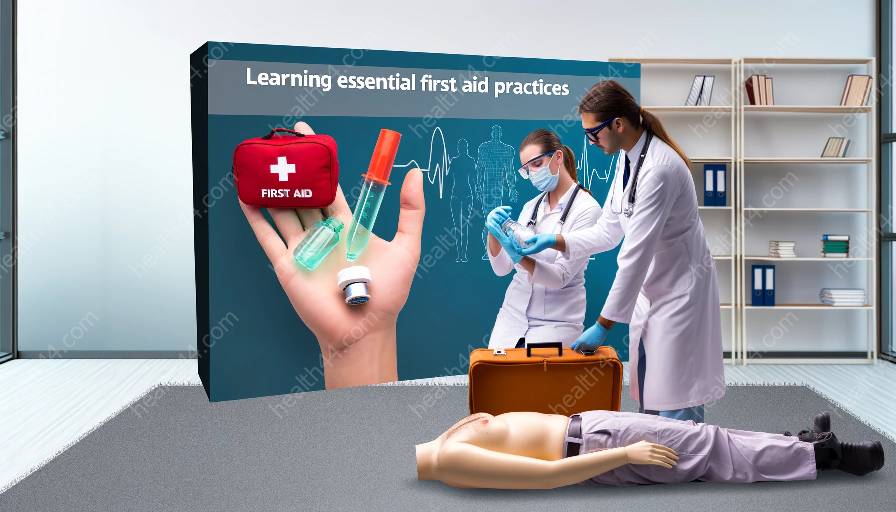Diabetes is a chronic condition that affects millions of people worldwide. While individuals with diabetes can typically manage their condition with medications and lifestyle changes, there are instances when a diabetic emergency may occur, requiring immediate recognition and response to prevent serious complications. Understanding the signs and symptoms of diabetic emergencies and knowing how to provide effective first aid can make a significant difference in ensuring the well-being of individuals with diabetes.
What Are Diabetic Emergencies?
Diabetic emergencies refer to acute, life-threatening situations that can arise in individuals with diabetes due to imbalances in blood glucose levels. These emergencies can occur in individuals with both type 1 and type 2 diabetes and may result from various factors, including medication errors, illness, or inadequate diabetes management.
There are two primary types of diabetic emergencies: hypoglycemia and hyperglycemia. Hypoglycemia, or low blood sugar, can lead to symptoms such as shakiness, confusion, and loss of consciousness. On the other hand, hyperglycemia, or high blood sugar, can cause symptoms such as severe dehydration, fruity-scented breath, and diabetic ketoacidosis (DKA).
Recognizing Diabetic Emergencies
Recognizing the signs of a diabetic emergency is crucial for providing timely assistance and preventing complications. Common symptoms of hypoglycemia include:
- Shakiness or tremors
- Sweating
- Irritability or confusion
- Rapid heartbeat
In contrast, hyperglycemia may present with symptoms such as:
- Extreme thirst
- Frequent urination
- Blurred vision
- Weakness or fatigue
It's important to note that individuals with diabetes may experience variations in symptoms, and some individuals may not exhibit typical signs of a diabetic emergency. Recognition may also involve identifying diabetes-specific devices or medications, such as insulin pumps or glucose monitoring systems.
Responding to Diabetic Emergencies
When faced with a diabetic emergency, it's essential to take swift and appropriate action. If an individual is displaying signs of hypoglycemia, immediate intervention should focus on raising their blood sugar levels. This can be achieved by providing fast-acting carbohydrates, such as juice or glucose tablets, to help restore the individual's blood sugar to a safe level.
Conversely, in cases of hyperglycemia, it's crucial to ensure the individual receives adequate hydration and seek medical assistance if they are exhibiting severe symptoms such as vomiting or confusion. Monitoring blood sugar levels and following any prescribed treatment plans can also play a crucial role in managing hyperglycemic emergencies.
First Aid for Diabetic Emergencies
First aid training should include specific modules on diabetic emergencies to equip individuals with the knowledge and skills needed to respond effectively. Training programs can cover topics such as:
- Recognizing the signs and symptoms of hypoglycemia and hyperglycemia
- Administering fast-acting carbohydrates and other appropriate treatments
- Understanding the use of glucose monitoring devices and insulin delivery systems
- Collaborating with emergency medical services when necessary
Health Education and Medical Training
Health education initiatives can raise awareness about diabetic emergencies by providing information on risk factors, prevention strategies, and appropriate responses. By integrating this content into health education curricula, individuals can develop a comprehensive understanding of diabetes-related emergencies and learn how to support individuals with diabetes.
Similarly, medical training programs for healthcare professionals should emphasize the recognition and management of diabetic emergencies, ensuring that clinicians and first responders are equipped to provide high-quality care in emergency situations. This may involve simulated scenarios, case studies, and practical demonstrations to enhance proficiency in responding to diabetic emergencies.
Conclusion
Recognizing and responding to diabetic emergencies is a critical component of first aid, health education, and medical training. By familiarizing individuals with the signs and symptoms of hypoglycemia and hyperglycemia, as well as the appropriate responses, we can enhance the safety and well-being of individuals with diabetes. Comprehensive training and education empower individuals to act promptly and effectively in addressing diabetic emergencies, ultimately contributing to better outcomes for those affected by this chronic condition.



